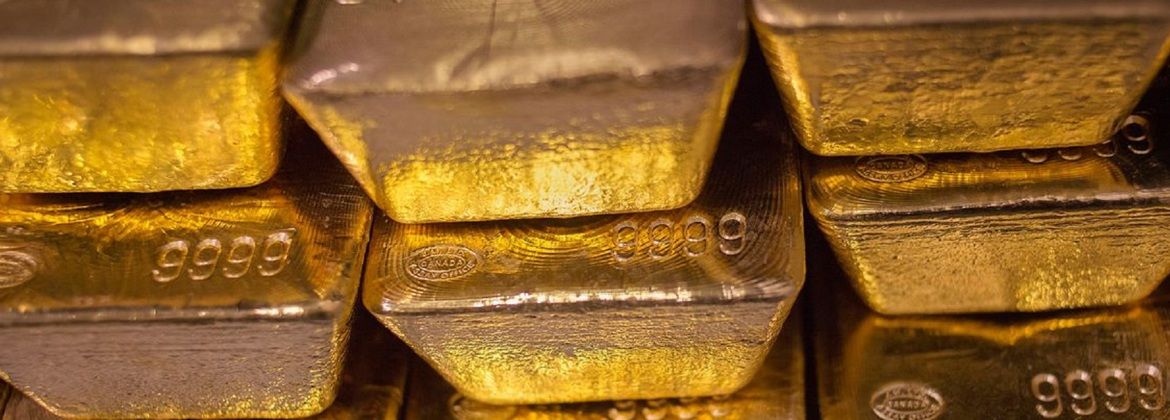“It’s been a rough few weeks. But these extreme moves, by their nature, tend to burn themselves out. In the short term, we have likely hit selling exhaustion on gold, silver and copper.”
- Paul Wong, Sprott Market Strategist
Our market strategist postulates that the recent selloff in gold and precious metals equities is largely driven by a dramatic repositioning of “algo” funds, large algorithmic hedge funds usually employing huge amounts of leverage.
Recall that ahead of the U.S. presidential election, gold was one of the most favored commodities regardless of who would win and had reached new all-time highs of $2,800 for the first time ever. But markets are forward looking and one would argue that gold was already pricing in the election. Following the election, which resulted in a red sweep, investment funds may have been pushed to liquidate, unwind their positions, sell their gold hedges and rotate.
Politics and Gold
This isn't the first time gold has taken it on the chin post-election. According to Heraeus Group,1 since 1976, elections of Republican administrations have led to an average 4.54% decline in the gold price within 60 days, compared to an average 3.83% rise in the gold price following Democratic wins. After Trump’s last win in 2016, gold lost 11.64%.
Figure 1. Gold Price Performance Around U.S. Elections (1976-2024)

Source: SFA (Oxford), Bloomberg.
The chart below shows the relative performance of gold (purple), gold miners (yellow), the U.S. 10-YR Treasury yield (green) and the U.S. dollar (blue) since the start of the third quarter on October 1, 2024.
As you can see, after breaking new all-time highs nearly every day leading up to the U.S. election, gold has been down 3.76% since November 5, while the miners have been down 7.89%. On the flip side, the dollar has rallied 2.97% but has failed to break resistance at the 107 level. The U.S. 10-YR Treasury yield, perhaps reflecting investors’ expectations of higher inflation over the long term, has rallied 11.73% from October 1 through November 30, despite recent interest rate cuts (25 basis points on November 7 and 50 basis points on September 18).
Figure 2. Asset Class Performance Comparison (October – November 2024)

Source: Refinitiv Eikon 10/01/24 - 12/02/24. Gold mining equities are measured by VanEck Gold Miners ETF (GDX); gold bullion is measured by the PREC.M.XAU; bonds are measured by the US 10YR T-NOTE; U.S. dollar is measured by the US DOLLAR INDEX.
Increased Market Dislocations
Since the U.S. election, we have seen consistent outflows from gold ETFs, not just in the U.S., but more broadly, including in China. Recent hawkish statements from Federal Reserve Chair Jerome Powell on the slowing pace of interest rate cuts may have also contributed to the weakening of gold sentiment. Short-term, rising interest rates put pressure on gold prices since gold pays no interest, unlike bonds.
But my thesis has not changed; if anything, my conviction in favor of gold and gold mining equities has increased. I see the recent pullback as a healthy consolidation and have actively been deploying capital in anticipation of the next leg up.
As Paul Wong noted, and I have noticed watching the markets every day, selling pressure appears to be running out of steam as the market completes its rotation.
But buyer beware. This probably won’t be the last upset. After all, we haven’t forgotten what happened during the Yen carry trade unwind (August 2024). These moves can be violent and unpredictable.
Sprott’s CEO, Whitney George, writes:
“The root cause for our concern about volatility is the structure and functioning of the U.S. Treasury markets ….Currently, the U.S. Treasury must ‘roll’ (gross issuance volume) $500 billion per week, up from $200 billion in 2018 and $100 billion in 2013. ….An unexpected event in any market or location can cause highly levered macro funds to liquidate on a moment’s notice.”
The accompanying graph shows the ballooning U.S. federal debt while foreign institutional demand for U.S. Treasuries has stagnated over the past decade. Picking up the slack, hedge funds and private equity funds have been accumulating massive amounts of U.S. Treasuries, often on leverage.
Figure 3. Growth in U.S. Federal Debt (1990-2024)

Source: FRED Economic Data. St. Louis Federal Reserve.
Which Would You Rather Own?
But what happens when bonds start behaving like risk assets? The graph below shows the bond-to-equity correlation over time. As you can see, the correlation turned positive in 2020 for the first time in just over 15 years.
Figure 4. Bond to Equity Correlation (1990-2024)

Source: Bloomberg 11/12/2024.
In the traditional 60/40 portfolio, bonds are supposed to be the hedge against one's equity risk. However, if bonds are no longer a trustworthy hedge, investors might start to look elsewhere.
The next chart shows the equity risk premium one gets for investing in stocks versus the traditionally safer bonds. Today, it is basically nil, meaning that the expected return is roughly the same whether you own stocks or bonds. So, which would you rather own? Stocks or bonds?
Figure 5.

Source: Bloomberg, Rosenberg Research. * Note that the equity risk premium is defined as the 12-month forward earnings yield on the S&P 500 minus the 10-year Treasury note yield.
Food for thought. But in short, I think the precious metals pullback is healthy as the sector appeared overbought running up to the election. The thesis has not changed one bit. So, you may want to sharpen your pencils and dust off your shopping lists.
P.S. Some of Sprott’s geologists were in the field again over the past few weeks, notably in South America and Southeast Asia. Here’s a photo taken underground in Papua New Guinea (PNG).

Sprott Economic Geologist and Managing Partner Justin Tolman is standing in front of K92’s Judd Vein in PNG.
Footnotes
- The Heraeus Group is a German technology group with a focus on precious and special metals, medical technology, quartz glass and sensors as well as electronic components.
